
This is the waveform we got on CAN H and CAN L- CAN H is Yellow and CAN L is Green.We believe this waveform pattern is not correct, have you seen this before ?
This thread has been locked.
If you have a related question, please click the "Ask a related question" button in the top right corner. The newly created question will be automatically linked to this question.

This is the waveform we got on CAN H and CAN L- CAN H is Yellow and CAN L is Green.We believe this waveform pattern is not correct, have you seen this before ?
Sobin,
Thanks for bringing this to E2E. You are correct in that these waveforms are not expected, especially since CAN differential signal is never supposed to crossover one another like typical differential signaling. Is it possible to share more waveforms, especially zoomed out, so we can see the voltage resolution to understand just how much these signals swinging beyond their respective and recessive levels?
Also, can a schematic be shared?
Regards,
Eric Hackett
Hello Eric, Thanks for the reply.
i 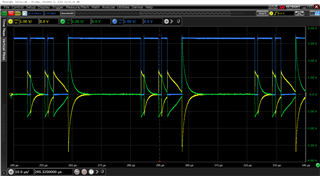
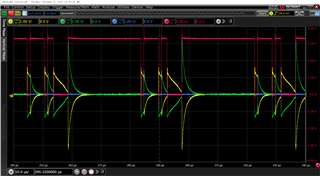
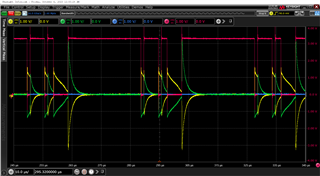
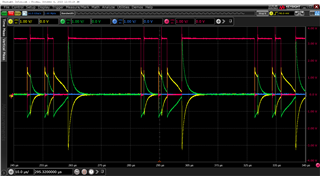
Channel -1 is CAN H,Channel -2 is CAN L ,TX- Channel 3,RX- Channel 4
Please find the schematics below
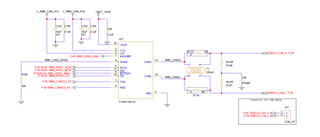
Thanks,
Sobin
Hi Sobin,
This is not expected behavior at all. This transceiver is not capable of driving the CANL signal above Vcc/2 level (2.5V nominal), so seeing this voltage jump above 3.0V is very surprising.
Is there anything else connected to the CAN bus during these tests? If so, please confirm that the CAHN and CANL pins are connected correctly and that the signals are not crossed.
Can you confirm the markings on the unit that you are testing? When you read the device ID from register h00, does it return the correct part number?
Regards,
Eric Schott
Hello Eric,
We found an issue in footprint of Common mode choke,Isolated the common mode choke and we could see waveform.
But couldn't communicate between two TCAN1146D,in between then there were 2 parallel termination resistors (now removed one pair).Using PCAN we could communicate with one CAN but not other.
Hi Sobin,
I'm glad to hear that you have found the source of the initial odd behavior. This is an interesting find and will be helpful for me to diagnose future similar issues.
Have you been able to capture waveforms of the communication (or lack of) during the secondary testing? Do you know what errors are being reported by the CAN controllers during the failed test - ACK error, form error, stuff error, etc.?
Regards,
Eric Schott